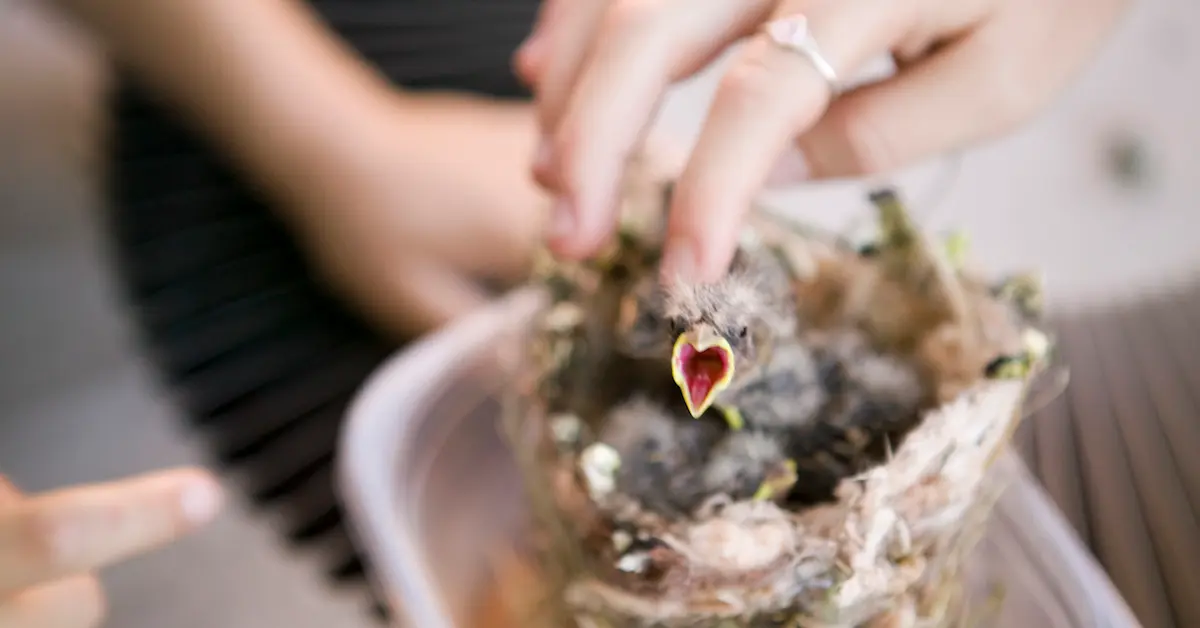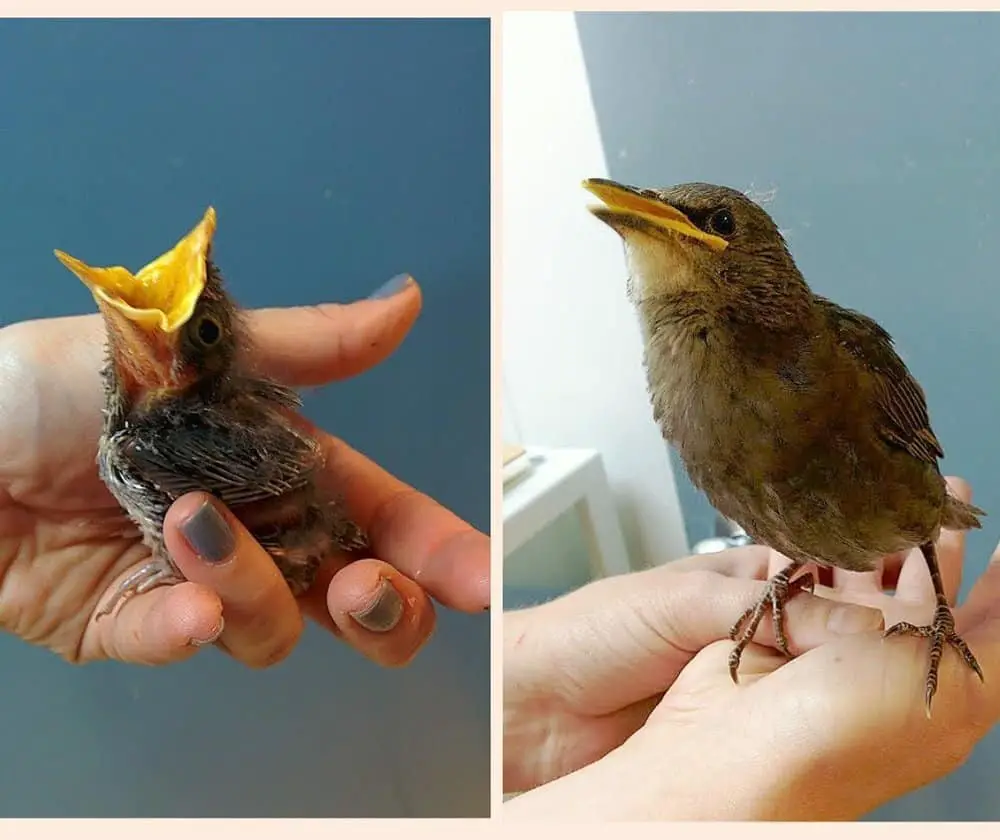Food and Toy Guides, Blogs
Feeding Baby Birds: Top Food Choices for Growing Nestlings
Ever wondered what’s the best food for baby birds? Their survival depends on it. This guide will cover what baby birds need, where to find their food, and how to feed them right. For those who find baby birds in trouble, knowing how to care for them is crucial. With *96% of birds feeding their young insects*, the right food is key for their growth.
Key Takeaways
- Understanding the differences between altricial and precocial birds is vital for appropriate care.
- Native plants play a significant role in providing essential food for baby birds.
- Hand-feeding techniques must be adapted to the developmental stage of the baby bird.
- Recognizing signs of healthy baby birds can ensure you’re meeting their feeding needs.
- Feeding intervals should be adjusted based on whether the baby bird has its eyes open or closed.
Understanding Baby Bird Dietary Needs
It’s key to know what baby birds need to eat for them to grow and develop well. The needs differ a lot between altricial birds and precocial birds. Altricial birds, like robins and blue jays, are born helpless and need their parents a lot. Precocial birds, such as ducks and geese, are more ready to find food soon after they hatch. The right diet is crucial for each type of bird.
Altricial vs. Precocial Birds
Altricial birds eat a lot of protein. Many species start with insects, especially in the first days. Cedar waxwings feed their young insects at first, then fruits later. American robins feed their babies worms and berries up to 150 times a day. Precocial birds eat soft foods right after hatching. Their diet includes seeds, fruits, and insects later on.
Nestlings vs. Fledglings
Nestlings need their parents for food and eat almost every 15-20 minutes to grow fast3. They eat soft insects, mealworms, and other small animals4. Fledglings start eating soft fruits and seeds, like adults, as they learn to find food safely.
Essential Baby Bird Food Sources
Knowing what baby birds need to eat is key for their growth and survival. Insects are a top food source for them. They are full of protein and fat, which baby birds need to do well.
Insects as the Primary Food Source
Insects are the main food for most baby birds. Studies show that up to 96% of birds that live on land eat insects to feed their babies. This diet high in protein is crucial. Baby birds eat often, about 12 to 14 hours a day, to grow fast.
Mealworms and crickets are easy to find and give baby birds the nutrients and water they need. For certain birds, adding soft fruits to their diet along with insects is okay during the early stage.
Other Nutritional Components
Insects are important, but other foods matter too. Soft fruits and cooked eggs can be added to a baby bird’s diet. They give baby birds vitamins and minerals. In emergencies, baby birds can eat moistened cat or dog food, making sure they get the nutrients they need.
It’s important to not give baby birds harmful foods like bread and milk. These can make them sick. By giving them a mix of foods, caregivers can help baby birds grow healthy.
Choosing the Best Baby Bird Food
Choosing the right food for baby birds is key to their health and growth. There are many options, from store brands to homemade recipes. Knowing what your baby bird needs helps pick the best food for it.
Top Baby Bird Food Brands
Many trusted brands offer great baby bird food. Harrison’s Bird Foods and Kaytee are top choices. They make food that meets the needs of many bird species. Their food is high-quality and helps baby birds grow strong.
Organic Baby Bird Food Options
For organic food, many brands have options without chemicals. They use organic grains, fruits, and veggies. Organic food is a healthy choice that keeps birds safe from harmful chemicals.
Homemade Baby Bird Food Recipes
Homemade baby bird food is another good option. Mix puppy or kitten kibble with soft fruits and insects like mealworms. Make sure the ingredients are fresh and right for the bird you’re feeding. Don’t use cow’s milk, as it can upset their stomachs.
Feeding Techniques for Baby Birds
Feeding baby birds needs a careful approach for their health and growth. Knowing the right feeding techniques is key to their success. With the right care, they can thrive during this important time.
How to Hand Feed Baby Birds
Starting to hand feed baby birds requires learning the right methods. Feed them every 15 to 20 minutes for consistent care in their early life. A good diet includes 60% puppy or kitten kibble, 20% hard-boiled eggs, and 20% mealworms for nutrition. Use soft foods to avoid choking hazards. Keep the food warm, between 102°F-106°F (39°C-41°C), for healthy digestion. Check if the baby bird has eaten enough after feeding to avoid overfeeding.
When to Intervene and Feed
Watch the baby birds closely for their behavior and surroundings. If a bird looks abandoned, you might need to help. But, many baby birds don’t need human help right away unless they look weak or distressed. Parent birds often take care of their young by foraging nearby. Only help if you’re sure the baby bird needs it, as they can usually do well with their parents nearby.
Learning how to feed baby birds well lets you make good choices for their growth. Follow these tips for a successful hand feeding experience. This ensures the little ones get the care they need to grow well.
As baby birds get older, they eat less often. Watching their behavior helps you know when they’re ready for solid foods. Keep an eye out for health issues during weaning.
Signs of Healthy Baby Birds and Feeding Success
Watching over baby birds is key to their growth. You can spot healthy baby birds by looking at their physical signs and how they eat. Seeing their parents often is also important to make sure they get enough food and care.
Physical Indicators of Health
Healthy baby birds show signs of being well. They have bright eyes, move around a lot, and have a full crop, which means they’ve eaten well. Nestlings, which are young birds, are very delicate and need special care. Sadly, many nestlings don’t make it because they’re sick or weak. If you find a chick on the ground, watch it for an hour before helping it.
Feeding Behavior and Parent Visits
Watching how baby birds eat helps you know if they’re getting enough food. Seeing their parents come often is a good sign. Studies show that many young birds don’t make it after leaving the nest. But, if parents stay with them longer, more of them survive. This time helps both the birds and their parents learn how to live on their own.
| Indicator | Significance |
|---|---|
| Bright Eyes | Indicates alertness and good health. |
| Active Movements | Shows strength and vitality. |
| Full Crop | Signifies successful feeding. |
| Frequent Parent Visits | Suggests adequate care and nourishment. |
| Age of Nestlings | Typically 1 to 14 days old. |
Knowing these signs helps baby birds grow and eventually become independent.
Conclusion
Learning how to care for baby birds is key for anyone wanting to help them grow strong. It’s important to feed them the right foods, like insects and seeds, especially when insects are hard to find. This helps them survive and grow well.
When caring for baby birds, watch for signs they might be sick or hurt, like being weak or injured. Make sure you have the right tools and ways to feed them safely. Keeping clean is also important to prevent sickness. By meeting their needs, you help them become strong and independent birds.
Being active and following the best feeding and care methods is crucial. It not only helps them survive but also supports their long-term health. Your careful actions are key to helping these birds grow strong and ready for the future.



